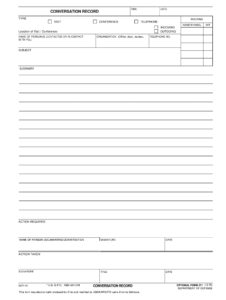In today’s fast-paced world, the conversation around mental health has thankfully moved from the shadows into the mainstream, and nowhere is this more critical than in the workplace. Companies are increasingly recognizing that a healthy workforce isn’t just about physical well-being; it deeply encompasses mental and emotional health too. Prioritizing employee mental health isn’t just a compassionate act; it’s a strategic imperative that contributes to a more productive, engaged, and stable workforce.
Understanding the current state of your employees’ mental well-being is the crucial first step toward building a truly supportive environment. But how do you gain these insights effectively and respectfully? This is where a well-designed survey comes into play, offering a confidential channel for employees to share their experiences and for employers to identify areas needing attention. Creating an effective employee mental health survey template can seem daunting, but it’s an invaluable tool for fostering a workplace where everyone can thrive.
Understanding the Importance of an Employee Mental Health Survey
For years, discussing mental health at work was largely considered taboo, if it was discussed at all. Thankfully, that outdated mindset is fading, replaced by a growing understanding that our mental state profoundly impacts our ability to perform, connect with colleagues, and find satisfaction in our careers. An employee mental health survey is more than just a questionnaire; it’s a statement from an organization that says, “We care about your whole well-being, not just your output.”
By deploying such a survey, businesses can gain invaluable, anonymous insights into the stressors employees face, the effectiveness of current support systems, and areas where additional resources might be needed. This proactive approach helps in identifying potential issues before they escalate, reducing burnout, stress-related absences, and ultimately, improving overall employee retention. When employees feel heard and supported, their loyalty, engagement, and productivity naturally increase.
Moreover, a well-executed survey can help to destigmatize mental health discussions within the company culture. It normalizes the idea that everyone might experience challenges from time to time and that seeking support is a sign of strength, not weakness. This creates a safer, more open environment where employees feel comfortable reaching out for help when they need it, knowing that their employer stands behind them.
It’s not just about uncovering problems, either. A survey can also highlight areas where the company is doing well in supporting its employees, allowing you to celebrate successes and reinforce positive practices. Understanding what’s working is just as important as knowing what needs improvement. This holistic view helps build a robust mental health strategy tailored to the unique needs of your team.
Key Areas to Cover in Your Survey
- Work-life balance: Questions about hours worked, flexibility, and ability to disconnect.
- Stress levels and workload: Gauging pressure points, resources available to manage tasks, and perceptions of workload manageability.
- Support systems: Assessing the perceived support from managers, colleagues, and HR, as well as awareness and accessibility of existing mental health resources.
- Coping mechanisms and access to help: Understanding how employees currently cope and if they feel comfortable and able to access professional help if needed.
- Overall well-being and job satisfaction: General questions about contentment, sense of purpose, and how work impacts their broader life.
Crafting Your Effective Employee Mental Health Survey Template
Designing an employee mental health survey template that truly yields actionable insights requires thoughtful planning and a commitment to employee privacy. The goal isn’t just to collect data, but to gather meaningful information that can guide concrete improvements in your workplace. Start by ensuring the survey is genuinely anonymous and confidential. Emphasize this at the outset to encourage honest responses, as employees are more likely to share openly if they trust their privacy is protected.
When it comes to the questions themselves, a mix of formats often works best. Likert scale questions (e.g., “Strongly Agree” to “Strongly Disagree”) are excellent for quantifying sentiments and tracking trends over time regarding specific aspects like workload pressure or perceived support. However, don’t shy away from open-ended questions. These qualitative responses provide rich, nuanced insights that often reveal underlying issues or innovative solutions that multiple-choice options might miss. They allow employees to articulate their unique experiences in their own words.
Consider the language used throughout the template. It should be empathetic, neutral, and free from any leading questions that might sway an employee’s answer. The questions should be clear, concise, and easy to understand, avoiding jargon or overly complex phrasing. Focus on areas that are within the company’s influence, ensuring that the insights gained can actually be acted upon. For instance, rather than asking “Are you stressed?”, a more actionable question might be “Do you feel you have the resources and support needed to manage your workload effectively?”.
Once your employee mental health survey template is finalized, the next crucial step is its deployment and, more importantly, the follow-up. Communicate clearly why the survey is being conducted, what you hope to achieve, and how the results will be used. After collecting the data, it’s vital to analyze it thoroughly, identify key themes, and then communicate findings back to employees, along with the specific actions the company plans to take. This transparency builds trust and demonstrates that their feedback is valued and leads to tangible change, making future surveys even more effective.
Fostering a Culture of Care and Support
By thoughtfully implementing an employee mental health survey, organizations aren’t just ticking a box; they are actively investing in the health and vitality of their most valuable asset – their people. The insights gained from such a powerful tool provide a clear roadmap for creating a workplace where mental well-being is not an afterthought, but an integral part of the organizational fabric. It’s about building an environment where individuals feel safe, supported, and truly able to bring their best selves to work each day.
Ultimately, a company that prioritizes and actively supports the mental health of its employees will see benefits far beyond just statistics. It will cultivate a stronger, more resilient culture marked by higher engagement, lower turnover, and a collective sense of purpose. This commitment transforms the workplace into a space where everyone can genuinely thrive, fostering a community that cares for one another and drives collective success.


